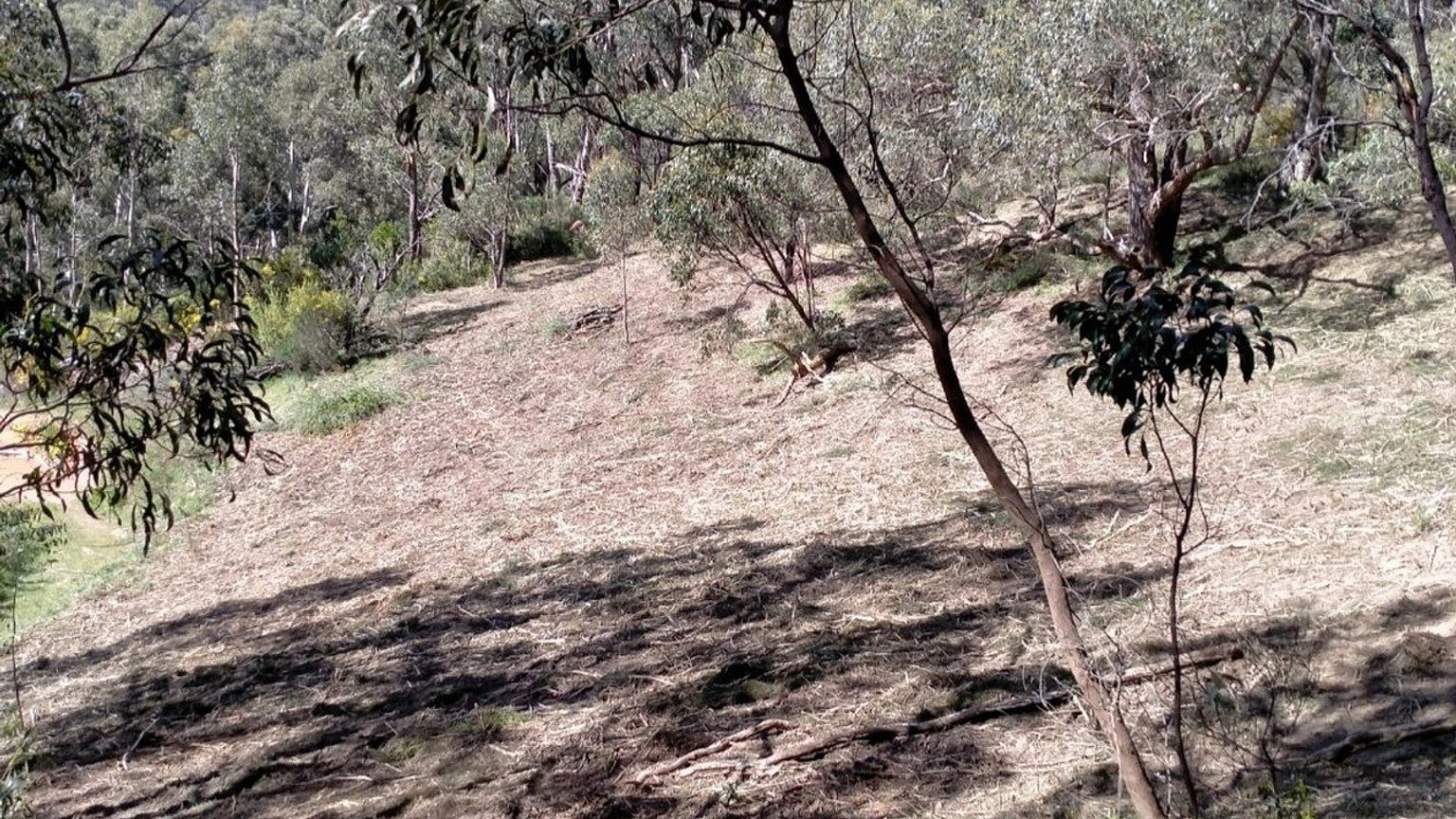Slashing in parks and reserves
How fuel affects bushfires
Bushfires are spread by dry fine fuels, smaller in diameter than your index finger. When flames come into contact with dry fine fuels, they heat up quickly and ignite, causing fire to spread.
When a fire reaches an area where there isn’t a lot of fine fuel it slows down; if it reaches an area where there is no fine fuel it stops spreading. So removing fine fuels reduces the risk of fire spreading.
Slashing removes this fine fuel so if a fire does occur, it’s less likely to spread beyond the slashed area. The fire will slow down or stop and the flames here will be smaller, making it easier for firefighters to suppress.
Moist fuels, such as green grass, need more heat than flames can provide to ignite so they don’t burn. Coarse fuels, such as fallen branches, take a long time to heat up and ignite: they might eventually catch fire and burn but they don't cause a fire to spread.
Our slashing program
Our reserves protect and conserve our native plants and animals and provide areas for recreation. Fire management planning helps us work out how to reduce the risk of bushfires in these reserves, while preserving the natural values.
As slashing helps stop the spread of bushfire we look at where we need to reduce fine fuels to reduce the risk of fire spreading from the reserve, and to reduce risk for firefighters.
When choosing where to slash we consider the park boundary, fuel types, adjacent land and the location of fire tracks. We also consider buildings and assets within and adjacent to the reserve.
The width of slashed breaks are narrow alongside roads because roads also serve as fuel breaks. Wider slashed breaks are used near houses and other buildings. We also slash along our network of fire tracks to ensure safe access for vehicles and to provide low-fuel breaks to slow the spread of fire.
We have a slashing plan for each of our reserves which identify which areas are to be slashed by machine and which ones will be hand slashed.

Slashing is just one of many fire management activities that we do. In areas which can’t be slashed we reduce fuels through other means such as prescribed burning, vegetation thinning or weed control.
Because our slashing program is in place to reduce fire risk we only slash grass once it cures and turns brown.
While the grass is green, it contains too much moisture to burn well and it doesn’t pose a fire risk. Slashing green grass too early is ineffective as the grass continues to grow and repeat visits become necessary.
We slash annually in accordance with our plans but the exact timing varies due to seasonal variability. Grass cures at different times from one year to the next; in dry years it cures early; in wetter spring periods the grass will cure later.
We monitor the curing rates and typically start in reserves to the north as these areas are dryer and warmer and the grass cures there first. We then work our way south to complete the program.
A tractor is used to complete the bulk of slashing in a reserve with our seasonal fire crew following up in selected areas with hand slashing. They also slash by hand areas that the tractor can't get to.
Because our fire crew work on prescribed burns in spring they may not be there immediately after the tractor, but as slashing is part of fire management planning we know where and when we need to send the crews.
We don’t consider slashing in a reserve complete until both machine and hand slashing has finished.
A shared responsibility
Planning and being prepared for a bushfire is a shared responsibility and it is important to have a Bushfire Survival Plan, prepare your property well before the fire danger season, and have a plan for total fire ban days. The CFS has resources to help you understand your role in bushfire preparedness and planning.




